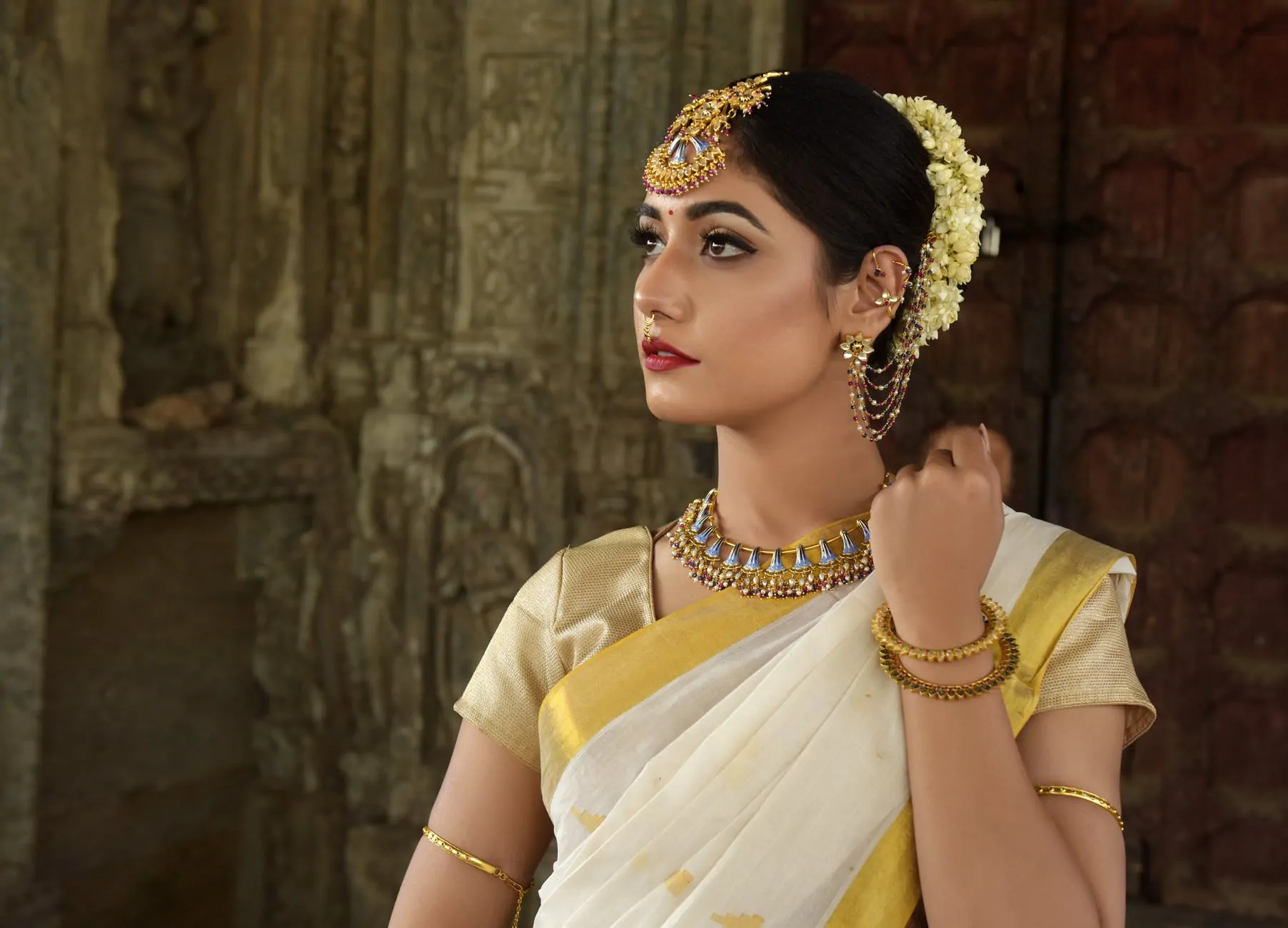
Table of Contents
As Jewelry Shopping Guide editors, we write about things that we love and we think you’ll like too. We often have affiliate partnerships, and may generate some revenue from these links at no cost to you.
Jewelry has been an integral part of Indian culture for thousands of years and is worn for almost every occasion.
Known for being elaborate, intricate, detailed, and colorful, Indian jewelry types are bold and eye-catching. Let’s take a look at Indian jewelry types and how to choose the perfect piece for you. If you’re not Indian, we’ve got you covered too.
History of Indian Jewelry
It would be remiss of us if we didn’t briefly mention the history of Indian jewelry. Indian jewelry can be traced back over 5000 years to the Indus Valley civilization, where early jewelry was crafted with less sophisticated techniques than today.
Since then, India has developed very distinct styles and techniques that have made its jewelry notable and unique. The vast geographical landscape of the country meant that distinct groups of people created distinct styles of jewelry, suitable to their region.
For Indian women, jewelry is not just a way to beautify themselves, but it also has great cultural and traditional significance.
Materials Used in Indian Jewelry
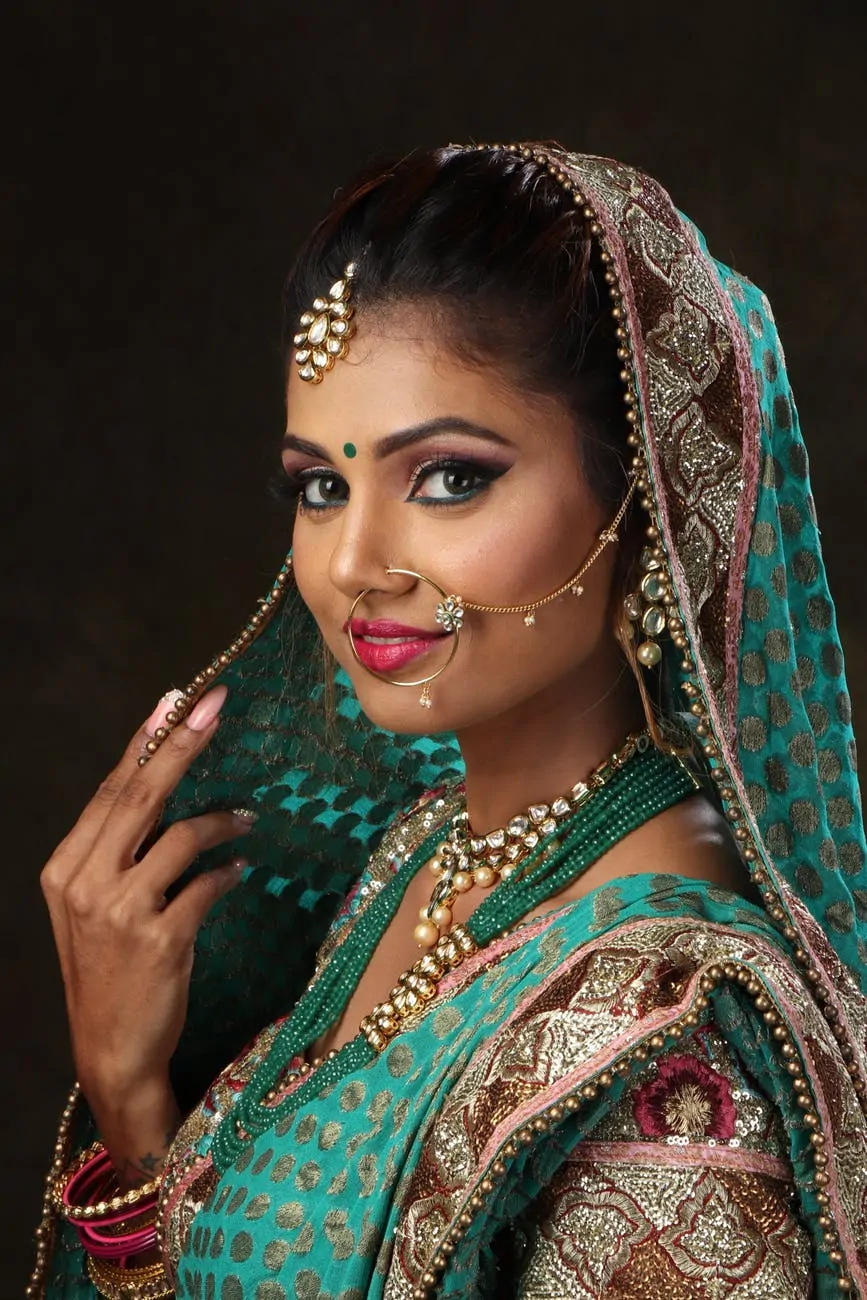
While materials used in Indian jewelry can vary, these are among the most popular:
1. Yellow Gold
Yellow gold holds great value in India and is seen as an asset. Gold is one of the most popular metals in Indian jewelry as it’s believed to be an auspicious material and symbolizes Lakshmi, the Hindu goddess of wealth, prosperity, and fortune. Fun fact – this is why in India, anklets are never made out of gold as that would be akin to placing god at your feet.
2. Gemstones
Gemstones are the heart of Indian jewelry as they allow elaborate patterns and gorgeous colors to be added to the designs. Popular gemstones include turquoise, ruby, sapphire, topaz, agate, jade, and amethyst. These gemstones not only add color but also value to the jewelry.
Gemstones are also chosen for their mystical healing powers and are believed to bring wealth, prosperity, good health, and happiness to a person.
3. Diamonds
Diamonds are highly coveted in Indian jewelry but especially when creating Polki (more on this below). Diamonds increase the value and affordability of jewelry but also make them heirloom quality pieces.
4. Pearls
Unlike in the West where pearl strands are popular, in India, pearls are paired with other gemstones and metals to create elaborate jewelry pieces. The opacity of the pearls combined with the sparkle and color of gemstones makes for stylish and modern jewelry.
Types of Indian Jewelry
There are so many types of Indian jewelry that we possibly couldn’t cover it all in this article. However, here we outline the most prominent varieties of Indian accessories.
1. Kundan Jewelry (a.k.a. Bikaneri or Jaipuri Jewelry)
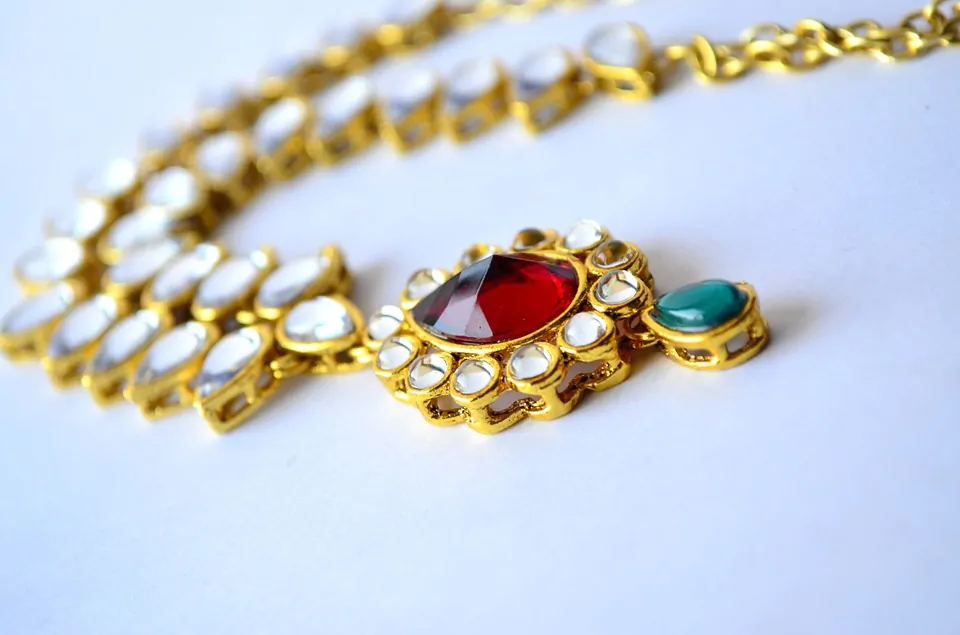
Kundan jewelry is one of the most popular types of Indian jewelry and is especially famous in Rajasthan. It refers to a type of gemstone jewelry, where highly refined gold is combined with gorgeous gemstones to create elaborate and intricate pieces. The word ‘kundan’ means pure gold.
Although precious materials like gold, sapphire, and pearls are popularly used in kundan jewelry, alternatives such as brass, glass, plated metals, and faux gemstones are substituted when creating affordable pieces.
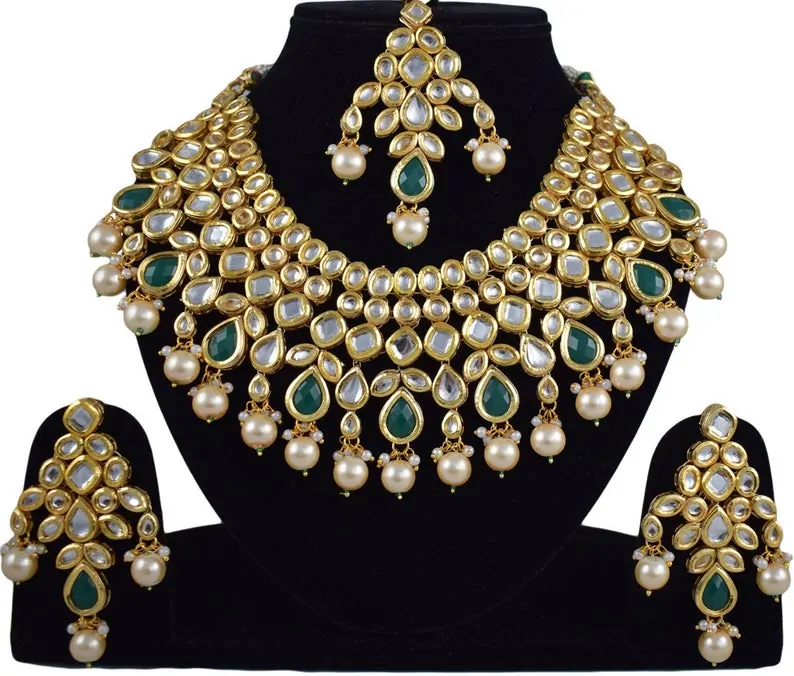
What defines kundan jewelry is the layer upon layer of stones and metals that are joined to form beautiful designs. Each stone is mounted in its own metal foil, which frames it, accentuates its shape and separates it from the other stones in the design.
The back of kundan jewelry is typically enameled using the Meenakari technique which can make the piece reversible and therefore more versatile.
Kundan is typically worn by brides, wedding guests, or any formal function. Many modern Indian women style kundan jewelry with contemporary clothing to give it a chic and modern look.
2. Meenakari Jewelry
Meenakari refers to an enamel technique that is used in various types of Indian jewelry. As mentioned above, even kundan jewelry often features meenakari enameling.
The beauty of meenakari is in its vivid, bright colors and smooth, polished appearance. It’s an excellent jewelry style for fun, modern pieces as well as for traditional Indian designs.
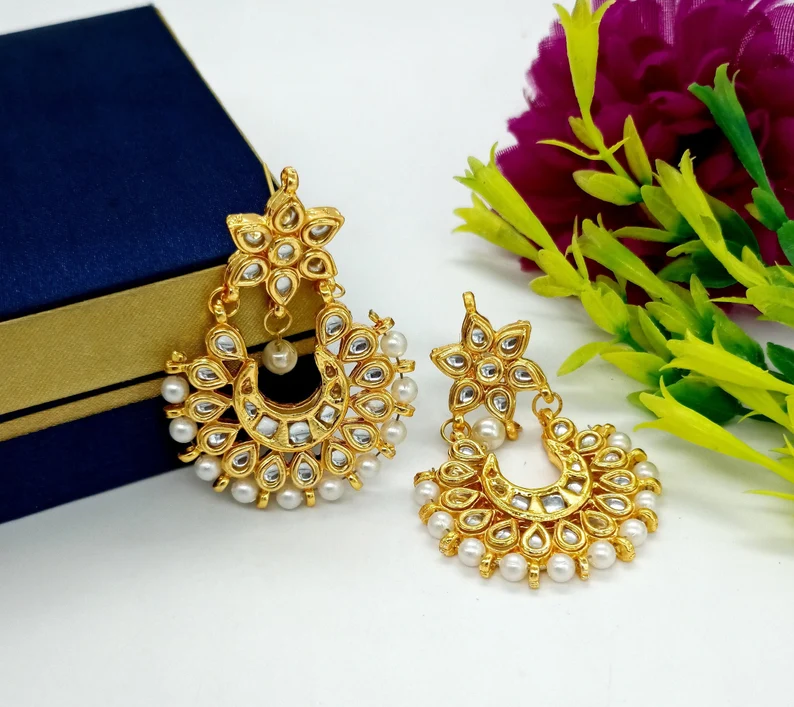
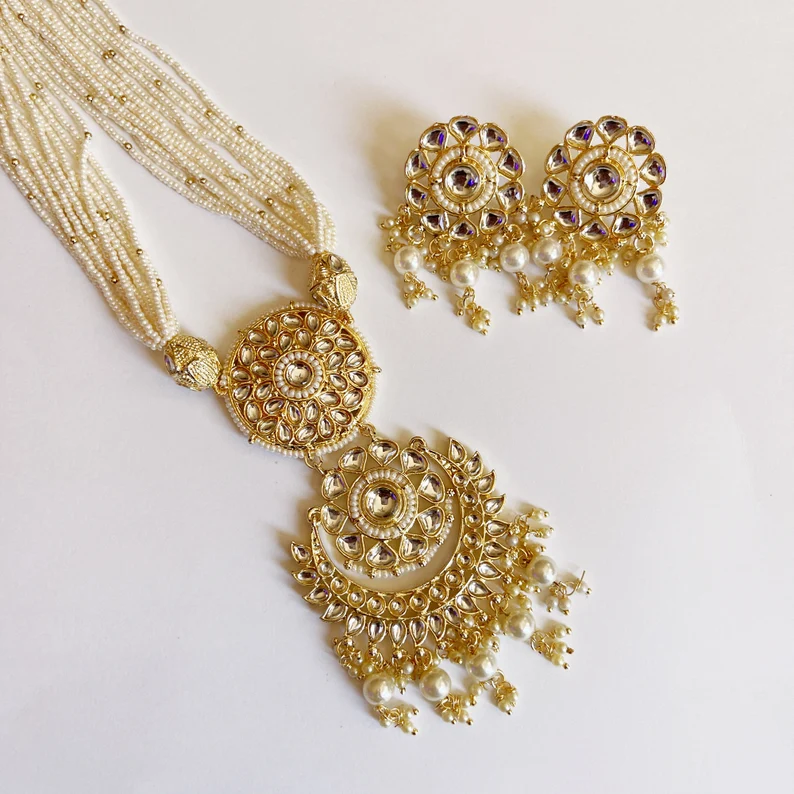
When you look at a piece of meenakari jewelry, you might assume at first that it’s all colorful gemstones, but on closer observation, you’ll notice the enamel artwork. Meenakari is typically paired with pearls, diamonds, and other colorful gemstones.
3. Polki Jewelry
Polki jewelry is one of the most notable types and is stunning when crafted properly. Polki features rough, uncut diamonds paired with gold and other gemstones. The diamonds aren’t polished to sparkle, and it’s the raw look that gives Polki jewelry its distinct look.
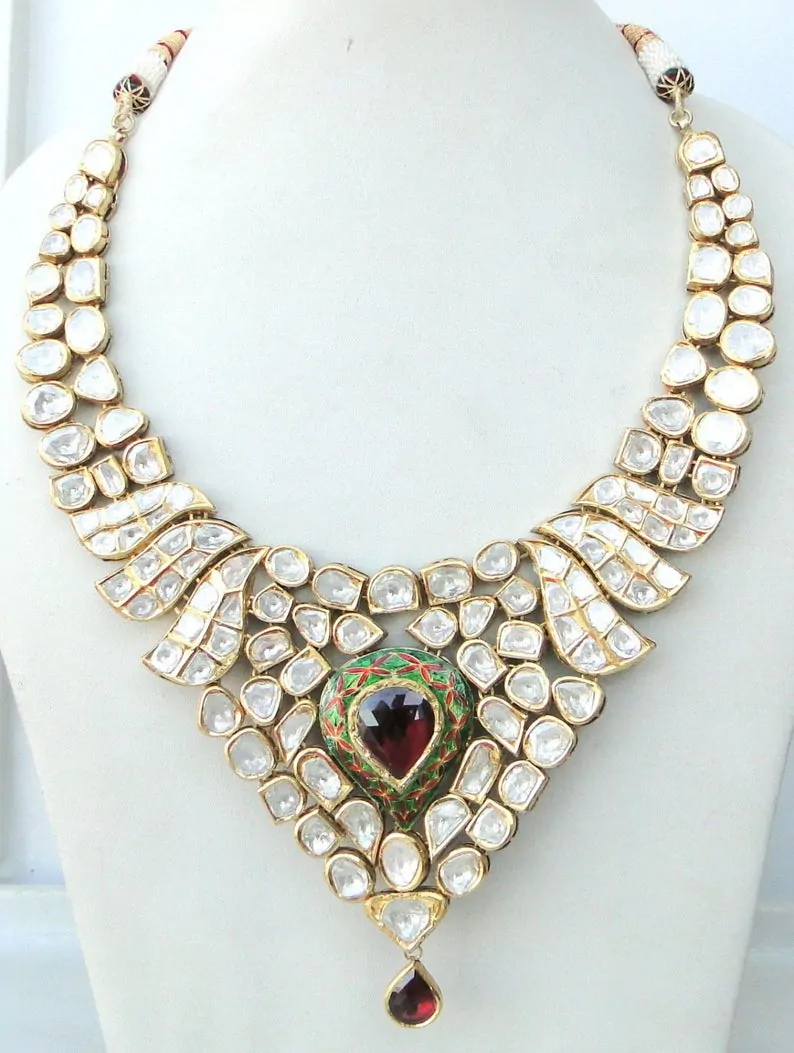
Because Polki jewelry is made of diamonds, it goes without saying that the pieces are typically expensive. It’s a sign of wealth and status to own Polki jewelry and these are typically cherished and passed down the generations as precious heirlooms. Most Polki pieces featured Meenakari work on the underside, similar to Kundan.
4. Lac Jewelry
Lac is simply short for lacquer, which refers to the style of this jewelry. Lac jewelry is typically colorful and vibrant in design, with each piece standing out. Lac jewelry is especially popular among married women as it’s believed to be auspicious.
5. Pachchikam Jewelry
Pachchikam jewelry was first crafted in Gujarat. It’s similar to Kundan jewelry but has a more rustic and fragile look. Like Polki jewelry, Pachchikam features raw gemstones and glass set in intricate designs. While it doesn’t have the polish that Kundan jewelry has, there’s no denying the beauty and allure of Pachchikam jewelry.
Pachchikam is a traditional, more old-fashioned style of Indian jewelry and is ideal for vintage looks. It’s currently back in fashion and also because it’s often made with silver and semi-precious gemstones, Pachchikam is often more affordable.
6. Jali Jewelry
Jali jewelry is characterized by exquisite metalwork featuring metal mesh and filigree. The word Jali refers to the type of stone carvings found in Indian architecture, which feature elaborate and detailed stone filigree-like designs. Jali screens, made of wood, are also used in houses to mark spaces.
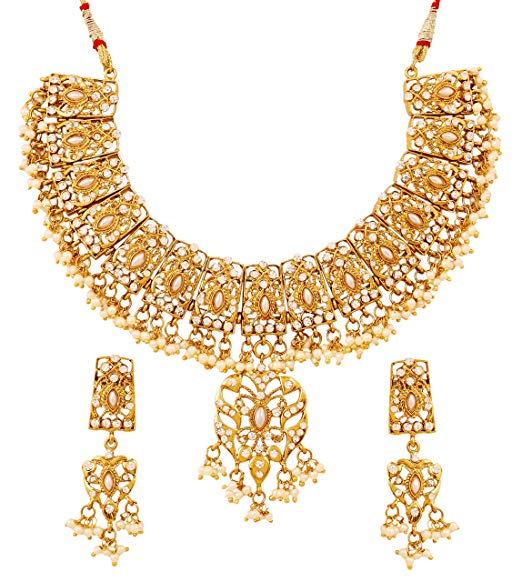
In Jali jewelry, the focus is on the metal rather than on gemstones, and on manipulating the metal into intricate latticed patterns. It’s a work of art and requires the design to be drawn on metal and then cut out using a small saw. The piece of metal is then polished to be lustrous and shiny. This is a labor-intensive and time-consuming process but the resulting artwork is worth it.
7. Jadau Jewelry
Jadau jewelry isn’t exactly a type of jewelry in itself. In fact, it’s simply the technique used in creating Kundan, Polki, and Pachchikam jewelry. The Jadau technique features gemstones set into gold and crafted into ornate designs. It’s extremely labor-intensive and takes many hours to create.
How and When to Wear Indian Jewelry (If You’re Not Indian)
Wearing Indian jewelry, if you’re not Indian, can be viewed as cultural appropriation. While some may love you for doing it, and see it as honoring Indian culture, others might find it disrespectful.
Kim Kardashian did this recently, wearing a maang tikka (a special head adornment worn by Indian brides), to a Christian church no less. This sparked outrage as it was clear that she didn’t know, or didn’t care about, the meaning behind the piece of jewelry. And just recently, Justin Trudeau donned Indian clothes when he visited the country and seemed to come off as playing dress up with his over-the-top attire.
In any case, some occasions when wearing Indian jewelry might be suitable is:
- If you’re attending an Indian event and the dress code is Indian
- If you’re attending an Indian wedding ceremony
- If you’re marrying an Indian
- If you’re married to an Indian
Don’t just wear a piece of Indian jewelry because it looks ‘nice’. There’s more to it than that. If you do wear Indian jewelry, try to find out the meaning behind the pieces and then see if it’s appropriate to wear them.









